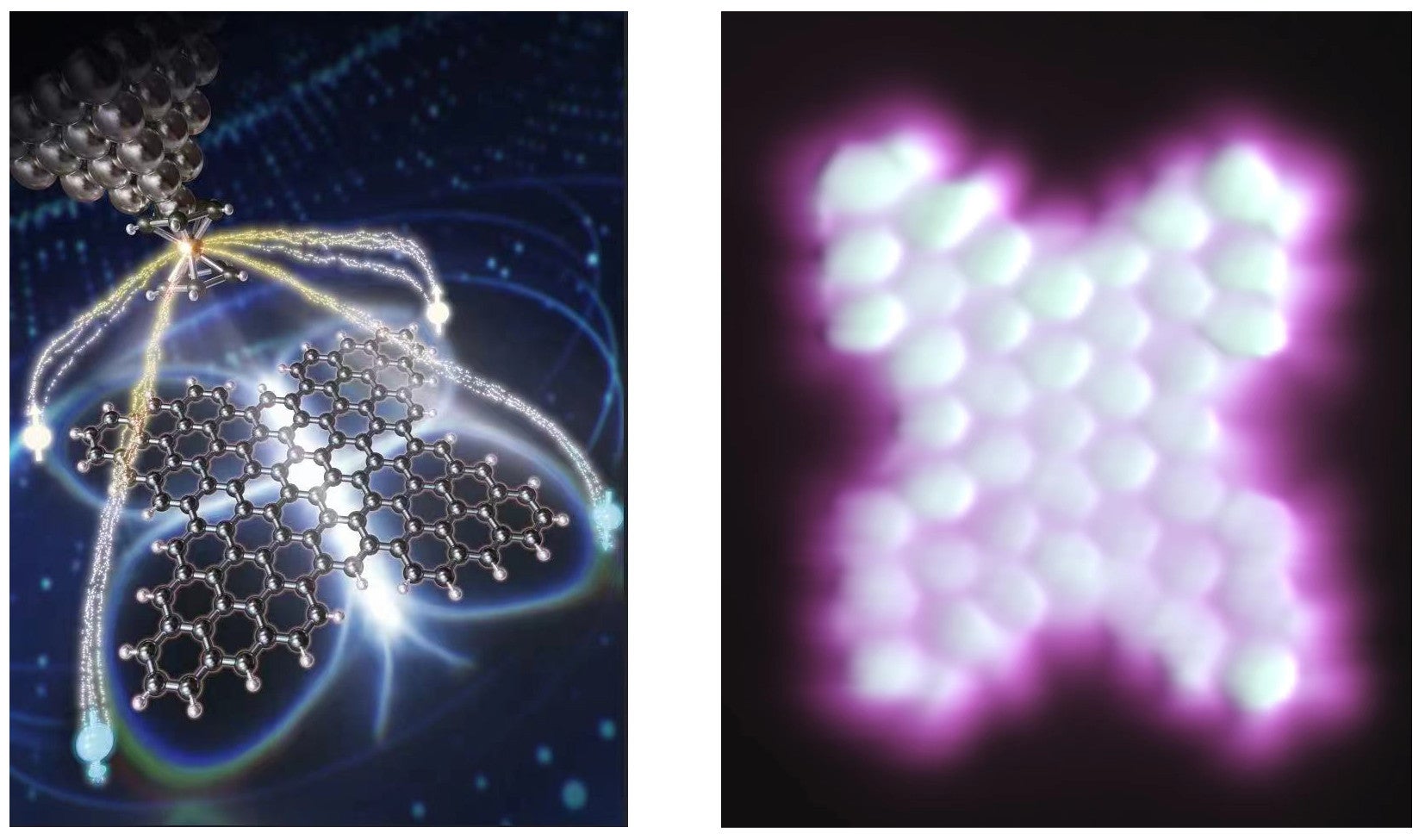
A team of NUS researchers led by Associate Professor Jiong LU from the Department of Chemistry and Institute for Functional Intelligent Materials, NUS together with Professor Jishan WU also from the Department of Chemistry, NUS and international collaborators, have developed a new design concept for creating next-generation carbon-based quantum materials, in the form of a tiny magnetic nanographene with a unique butterfly-shape hosting highly correlated spins, demonstrating potential for advancements in quantum information technologies.
This unique structure has four rounded triangles resembling “butterfly wings”, with each of these wings holding an unpaired π-electron responsible for the observed magnetic properties. The structure was achieved through an atomic-precise design of the π-electron network in the nanostructured graphene. Prof Lu said, “Magnetic nanographene, a tiny molecule composed of fused benzene rings, holds significant promise as a next-generation quantum material for hosting fascinating quantum spins due to its chemical versatility and long spin coherence time. However, creating multiple highly entangled spins in such systems is a daunting yet essential task for building scalable and complex quantum networks.”
This significant achievement is a result of close collaboration among synthetic chemists, materials scientists, and physicists, including key contributors Professor Pavel JELINEK and Dr Libor VEI, both from the Czech Academy of Sciences in Prague. The research breakthrough was published in the scientific journal Nature Chemistry.

Associate Professor Lu Jiong (left), Dr Song Shaotang (middle) and Professor Wu Jishan (right) were part of the multidisciplinary research team which developed the butterfly-shaped magnetic nanographene which could advance quantum technologies.
“The insights gained from this study pave the way for creating new-generation organic quantum materials with designer quantum spin architectures. Looking ahead, our goal is to measure the spin dynamics and coherence time at the single-molecule level and manipulate these entangled spins coherently. This represents a significant stride towards achieving more powerful information processing and storage capabilities,” added Prof Lu.

Figure illustrating (left) a visual impression of the magnetic “butterfly” hosting four entangled spins on “wings” and (right) its corresponding atomic-scale image obtained using scanning probe microscopy.
